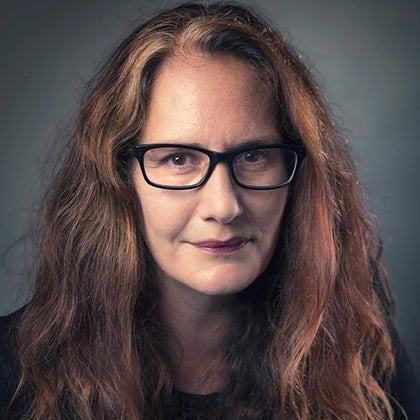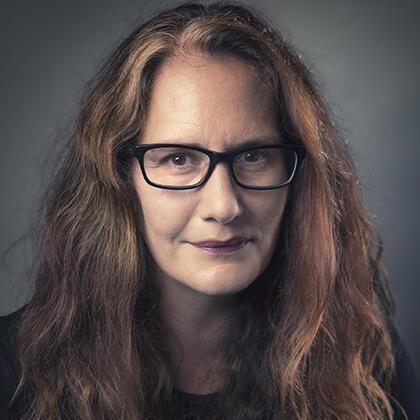Messaging and Signals
Share
- Details
- Text
- Audio
- Downloads
- Extra Reading
When we have information to share, we communicate. The development of signals from signs visible over short distances to wireless transfer worldwide of billions of data-heavy messages is full of surprising characters. None more so than the Hollywood starlet who made Wi-Fi and GPS possible, only receiving public recognition near the end of her life. This lecture traces the development of technologies for messaging and signals, from wireless to wired and back again.
Download Text
Messaging and Signals
Dr Victoria Baines, IT Livery Company Professor of IT
29 October 2024
Before wired there was wireless
We have always needed to communicate, and as communities began to travel and trade, the distance to be covered by that communication grew. In pre-literate communities, signals were often simple, easily recognised, and specific to their use cases. In some contexts, sounding the alarm would rely largely on that sound being unexpected or otherwise out of the ordinary. So, church bells would necessarily denote an emergency if they sounded at the wrong time – i.e. not on the quarter hour or hour, or to call to scheduled worship – or if the peal was not the customary one to mark events such as weddings. Indeed, several sources suggest that peals may have rung out backwards in emergencies. In that case, we can deduce that pre-literate messaging and signals relied on people being able to recognise patterns and detect anomalies, deviations from the norm. Curiously, pattern recognition and anomaly detection is precisely how we conduct security operations today. In fact it’s how we secure our communications on the Internet.
The delivery of more complex audible information over long distances was possible but not without difficulty. Talking Drums were used to imitate the pitch and cadence of African tonal languages. This appears to have been more effective in ritual settings, where the words of proverbs and songs might already be known and expected, arguably less so to communicate factual information, where ambiguity would prove problematic, and the transmission of brief, recognised patterns denoting essential messages would have been preferable. This didn’t stop Talking Drums being viewed with suspicion by those who didn’t understand their language. Their use was forbidden in the US during the enslavement era due to fears that a secret communication channel could be used to incite rebellion.
A signal may also be awaited. An example of this is the white smoke (fumata bianca) that announces the successful election of a new Pope, black smoke (fumata nera) signalling that the two thirds majority of voting cardinals has not yet been reached. Smoke signals are, of course, not unique to the Vatican. In Ancient China, soldiers sent different coloured signals along the Great Wall by adding various herbs to their fires. In England at the time of the Spanish Armada (1588), both the lighting of beacons and their configuration conveyed information. A single lit beacon of a group of three might indicate a suspect vessel out at sea, two a stronger suspicion of enemy approach, and three an imminent invasion. There’s a parallel here with the public communication of graded national threat levels in our era. At the time of writing, the terrorist threat level in the UK is ‘substantial’, meaning that an attack is likely. Levels range from ‘low’ to ‘critical’, the latter denoting that an attack is highly likely in the near future. Three fires in a triangle or a series are still an internationally recognised distress signal.
Classical IT – tékhnē
The Greek historian Polybius (c.200 – c.117 BCE) describes technologies for the telegraphy of more complex messages, including a hydraulic system devised by the 4th century BCE engineer Aeneas Taktikos, which enabled the sending of pre-agreed messages such as ‘Cavalry arrived in the country,’ ‘Heavy infantry,’ ‘Light-armed infantry,’ ‘Infantry and cavalry,’ ‘Ships,’ ‘Corn,’ and so on, “until we have entered in all the sections the chief contingencies of which, at the present time, there is a reasonable probability in wartime” (Histories 10.44). These were inscribed in identical locations on identical rods attached to identical cork floats in identical jars filled with water. The transmitter signalled to the receiver with a burning torch when to open and close the taps. When the flow stopped, the desired message was visible on the receiver’s device.
Polybius also records a method for encoding letters in fire signals. He credits what has since become known as the Polybius Square to two Alexandrian engineers, Cleoxenes and Democletus (Histories 10.45).
The matrix designates the number of torches to be held up in two groups of five, according to the rows and columns. So, the letter A (alpha) is formed by 1 torch in one group and 1 torch in the other, Σ (sigma) by 4 torches in one group and 3 in the other, and so on.
All these methods presume the involvement of human operators. When it comes to carriers, the contingent expands to include non-humans, especially – but not exclusively – in the pre-industrial era. The 5th century BCE historian Herodotus recounts how, in one of the earliest recorded examples of steganography, the Greek tyrant Histiaeus tattooed a secret message on the shaved head of one of his slaves (Book 5, Logos 14). Once the hair had grown back, he sent the slave to his son-in-law with instructions on how to read the message, which was an order to revolt against the Persians. Reliance on human envoys is of long standing, and although there is a lack of consensus about the precise origin of the saying “Don’t kill [don’t shoot] the messenger”, accounts of violence against envoys for bringing bad news can be found in several different traditions. In the Old Testament, David kills a young man who informs him that Saul and Jonathan have died in battle (2 Samuel 1-2). Plutarch and Appian describe a scene in which the Armenian king Tigranes slaughters a messenger who brings him news of the Roman general Lucullus’ advance in 69 BCE. Curiously, they disagree about how he met his end: Plutarch states that Tigranes cut off his head, Appian that he was hanged. Rather astutely, Plutarch presents the execution as a strategic error which ultimately contributes to his downfall: “no one else would tell him anything, and so he sat in ignorance while the fires of war were already blazing around him, giving ear only to those who flattered him” (Life of Lucullus 25).
Winged (and hoofed) messengers
Horses have been reliable vehicles for messages and messengers for millennia. For a very brief period before the mainstream adoption of the electric telegraph, the Pony Express in the United States formalised this usage into a transcontinental express mail service comprising relays of riders. But the most extraordinary and persistent animal presence in messaging is undoubtedly the carrier pigeon, believed to have been actively engaged in the transport of messages in 14th century BCE Egypt, and confirmed by the Elder Pliny to have been thus employed in 1st century CE Rome:
In addition to this, pigeons have acted as messengers in affairs of importance. During the siege of Mutina, Decimus Brutus, who was in the town, sent despatches to the camp of the consuls fastened to pigeons' feet. Of what use to Antony then were his intrenchments, and all the vigilance of the besieging army? His nets, too, which he had spread in the river, while the messenger of the besieged was cleaving the air?
Natural History 10.53
This striking description casts the birds as extraordinary agents of ingenuity. And indeed, their fleetness of wing and reliability assured their place in Information Technology at least until the advent of the electric telegraph, and apparently far beyond. A fleet of pigeons was used by the founder of Reuters to carry news where there were gaps in the telegraph network. It would seem that the advent of the Internet finally put paid to commercial and official use of carrier pigeons, with one police department in a remote part of India only discontinuing ‘p-mail’ in 2002. Their ability to go where wires could not kept them in business, as did their multimedia versatility. Over the centuries they have carried not only written messages but also other formats such as images, audiotape, and microfilm. In this respect they are arguably unsurpassed until the Internet Age. During the First and Second World Wars, pigeons were deployed extensively by the UK military. Declassified papers reveal that MI14 operated Source Columba or the Special Pigeon Service, which dropped birds into Occupied Europe equipped with paper, pencil, message tube and instructions for completing a report. They were effectively operational intelligence gatherers.
Military innovation
The military has of necessity been central to signals innovation for many centuries. Predating electrical communication, signal instruments including drums, fifes and bugles kept time and issued commands on land and sea. Over the course of the 19th and early 20th centuries, military communications were institutionalised in nations’ Signals Corps. The electrical telegraph and subsequently radio technology were widely used. Field telegraph trains and field radios provided mobile networks long before digital mobile phones.
During the Second World War, the British Air Defence Experimental Establishment (ADEE) conducted research into military radar. At its base at Christchurch in Dorset, it developed Coastal Defence Radar, later known as Chain Home Low, the RAF’s early warning system for detecting and intercepting aircraft. When ADEE moved to Malvern in 1943, the Signals Research and Development Establishment (SDRE) took over the site. SDRE was engaged in cutting-edge development of radio and satellite communications. It built Wireless Set No. 10, the world’s first multi-channel microwave relay communication system, used for secure battlefield communications. This was the forerunner to the Ptarmigan communications system used by the British Army, which itself was the first Digital Area Communications System for secure speech, telegraph and data services, and provided the technology for today’s mobile networks. After the end of World War Two, the unit began to experiment with global radio communication, bouncing radio waves off the moon and even space junk. SDRE was also at the forefront of satellite communication research, including the Skynet family of satellites which still provides communications for the UK military. Quantum physicists on the site also conducted research into the use of fibre-optic cables for transmitting large amounts of data – another innovation that is now widespread. For much of the latter part of the last century, the ‘moon bounce’ dish and ‘radomes’ were clearly visible to residents and holidaymakers (known locally as ‘grockles’) alike. Their concrete bases are all that remains now to remind visitors of the incredible technical progress made on this little patch of British seaside.
‘The most beautiful inventor in the world’?
Radio communication also raised the possibility of mechanical devices that could be controlled remotely. One such idea was the radio-controlled torpedo. But radio communication could be easily jammed, thwarting remote guidance. In 1941 two US-based inventors filed patent #2,292,387 for a "Secret Communication System”:
This invention relates broadly to secret communication systems involving the use of carrier waves of different frequencies, and is especially useful in the remote control of dirigible craft, such as torpedoes. An object of the invention is to provide a method of secret communication which is relatively simple and reliable in operation, but at the same time is difficult to discover or decipher. Briefly, our system as adapted for radio control of a remote craft, employs a pair of synchronous records, one at the transmitting station and one at the receiving station, which change the tuning of the transmitting and receiving apparatus from time to time, so that without knowledge of the records an enemy would be unable to determine at what frequency a controlling impulse would be sent.
The two identical sets of instructions would be followed using technology repurposed from the entertainment world, namely, the paper rolls used in player pianos:
In a conventional player piano record there may be 88 rows of perforations, and in our system such a record would permit the use of 88 different carrier frequencies, from one to another of which both the transmitting and receiving station would be changed at intervals. Furthermore, records of the type described can be made of substantial length and may be driven slow or fast. This makes it possible for a pair of records, one at the transmitting station and one at the receiving station, to run for a length of time ample for the remote control of a device such as a torpedo.
Despite recognition by the National Inventors Council as a “red hot” invention, according to one of the patent holders, musician and composer George Antheil, the US Navy rejected the idea because they assumed it meant that player pianos would have to be installed on submarines (this was not the case). It was, however, subsequently incorporated into US military radio communications in the mid-1950s. Now known as ‘frequency hopping’, or ‘spread spectrum technology’, today it is now used to reduce interference in Wi-Fi, Bluetooth, GPS, and the GSM international cellular telephone network.
The other inventor named on the patent is Hedy Kiesler Markey, aka the actor Hedy Lamarr. Reportedly the inspiration for Disney’s depiction of Snow White and famously described as “the most beautiful woman in film”, she had been married to an arms manufacturer in Austria before leaving for the UK and Hollywood in the early 1930s. The tycoon and aviator Howard Hughes had made his team of scientists available to assist in her inventions. Her concept for a secret communications channel did not go unnoticed at the time. In addition to receiving the official approval of the National Inventors Council, on October 1st 1941 the New York Times ran a story – albeit in its ‘Amusements’ section – which recognised, “So vital is her discovery to national defense that government officials will not allow publication of its details”, and speculated, “The only inkling of what it might be was the announcement that it was related to remote control of apparatus employed in warfare.”
Curiously, and perhaps unexpectedly, this article doesn’t mention her looks or adopt a condescending tone to the effect that the invention is a good effort ‘for a little lady.’ Lamarr received no financial compensation for the use of her invention, but interest in her scientific work increased towards the end of her life, apparently prompted at least in part by the testimony of someone who designed sonobuoys for the US Navy. This was accompanied by official recognition with an Electronic Frontier Foundation Pioneer award (with George Antheil) in 1997 and induction into the National Inventors Hall of Fame in 2014.
Since her death in 2000, her status as an unsung hero has continued to grow, with the naming of a GPS III satellite in her honour in 2021. The popular belief that she ‘invented Wi-Fi’ has been propagated by the US National Archives and by thousands of well-meaning social media users keen to reclaim Information Technology from Silicon Valley ‘tech bro’ culture. In a popular Internet meme, images of Jack Dorsey, Mark Zuckerberg, and Steve Jobs with the respective captions “I made Twitter”, “I made Facebook”, and “I made Apple” are juxtaposed with an iconic photograph of Hedy Lamarr, captioned “I MADE WIFI” [original emphasis]. Rather like Ada Lovelace, whose contribution to computing we considered in my lecture on The Ancient History of Computers and Code, she has become something of a mythical figure for women looking to reclaim, or people wanting to encourage women and girls to participate in, Information Technology.
It's clear that Lamarr and Antheil did not invent, and could not have invented, Wi-Fi, GPS, Bluetooth, or any other 21st century messaging system. Claiming as much is sensational, even while it seeks to redress an imbalance, and is arguably counter-productive because so easily disproved. The facts of the matter – that she co-invented a technology that enables messaging systems to operate more securely and more efficiently – are extraordinary enough, even if they are less amenable to being turned into a soundbite or clickbait.
The older siblings of the ‘Victorian Internet’
As I’ve hinted at above, the advent of the electric telegraph proved hugely disruptive to existing models of messaging, whether these were visual or written, winged, two- or four- legged. In this and other respects it was, in the words of the author and journalist Tom Standage, effectively a “Victorian Internet” (see Further Reading). Mass, global adoption of telegraph technology depended on other inventions, among them the harnessing of electricity, the light bulb, and a language to encode words as electrical pulses. 1865 saw the introduction of International Morse Code, which standardised American and Continental versions, resulting in a format that could be used for all languages with Roman letters and Arabic numerals. Just like modern Internet traffic, intercontinental telegraph traffic required the laying of undersea cables, including a 2,500-mile cable across the Atlantic Ocean, which needed to be insulated with gutta-percha. And just as the 21st century has seen a boom in the market for the rare minerals and precious metals used in the production of mobile/cell phones, the telegraph rush was a fantastic time to be a gutta-percha merchant. Then as now, our drive to communicate in ever more innovative and immediate ways made fortunes while depleting natural resources.
Less well-known is the fact that there was a telegraph before the electric telegraph, one which has left its mark on the landscape around the world. The optical (semaphore) telegraph invented by Claude Chappe in the early 1790s made use of vantage points on high ground or purpose-built towers, as had earlier visual systems like smoke, fire and light signals. An apparatus with two movable arms attached to pullies enabled an operator to change the signal to correspond with the 26 letters of the Roman alphabet and 10 Arabic numbers. In operation from the end of the 18th century across Europe and some countries colonised by European powers, the global distribution of optical telegraphs is commemorated in the number of places named Telegraph Hill, among them the hill in San Francisco on which Coit Tower now sits.
The optical telegraph was much hyped and spread widely, but its dominance was short-lived. The 1797 Encyclopedia Britannica, as noted by Tom Standage, envisaged that it might hasten something akin to world peace: "The capitals of distant nations might be united by chains of posts, and the settling of those disputes which at present take up months or years might then be accomplished in as many hours." In Napoleonic France, an extensive network was used to communicate lottery results. In an age in which we are understandably exercised by the potential of IT for misuse, we may take heart from the fact that in 1836 two Bordeaux businessmen were caught using Chappe’s telegraph system to receive information about Paris stock prices before anyone else, once again demonstrating what increasingly I am calling Baines’ Theory:
- Technology develops rapidly;
- Some people will always want to break the rules;
- These people will have an interest in using technology to break the rules;
- Therefore, the urge to misuse technology is inevitable.
Those of us who track trends in this misuse regularly complain that the law is slow to catch up with the pace of technological change, that our attempts to regulate and safeguard IT lag behind the ingenuity of criminals. According to the French account, this certainly seems to have been the case for the Blanc brothers, who in the absence of legislation criminalising insider trading were handed only a fine for corrupting officials, and went on to enjoy very full careers in gambling establishments, among them the casino at Monte Carlo. And in a turn of events that is becoming something of a constant in this lecture series, in just a few decades the optical telegraph was overtaken by another technology – the electrical telegraph – and soon became confined to specialist usage. Semaphore persists as flag semaphore in the maritime industry.
The electrical telegraphs devised concurrently by Samuel Morse in the US and Cooke and Wheatstone in the UK were not the first instances of someone conceiving of the idea of using electricity to send messages. The suggestion was first made in 1753 by Charles Morison in an anonymised letter to the Scots Magazine. Rather than encoding letters as pulses, Morison proposed that each letter be assigned its own wire. As early as 1816, a working electric telegraph had been constructed. In a letter to Lord Melville, then First Lord of the Admiralty, its inventor, Francis Ronalds, envisaged a future of post-Covid-style hybrid working:
…why should not our kings hold councils at Brighton with their ministers in London? Why should not our government govern at Portsmouth almost as promptly as at Downing Street? Let us have electric conversazione offices, communicating with each other all over the kingdom, if we can.
Just over two hundred years later, Zoom and Microsoft Teams allows us to do just that. Product names like ‘Office 365’ convey the mobile, ubiquitous, virtual environment foreseen by Ronalds. We may nevertheless be somewhat disappointed that the fashion for calling them ‘electric conversazione offices’ didn’t catch on.
Wireless to wired…and back again
As in other aspects of Information Technology, in messaging and signals we see evidence of digital divides. Use of ancient messaging tools persists where more modern equivalents are restricted. While South Korea’s lunar orbiter is at the forefront of demonstrating the feasibility of a fault-tolerant ‘space internet’, in North Korea access to the terrestrial internet is tightly controlled in an effort to throttle communication with outsiders and access to foreign information sources. Consequently, recent years have seen campaigns in which activists in the South have deployed balloons and bottles to distribute messages on leaflets, USB sticks, and electronic speakers to the North.
As the Polybius Square illustrates, messages have been encoded from their earliest history. While in some settings this was in the interest of efficiency, security was of paramount concern in others. As we saw in my lecture on end-to-end encryption, encoding a message with a cipher known only to the sender and recipient secures that message in transit. Governments that want to control the thoughts and utterances of their citizens naturally are driven to limit the availability of any technology that can be used to send and receive information clandestinely. It may be something of a stretch to claim that greater Internet surveillance and censorship will lead to a dramatic increase in pigeon fancying, it does appear to be the case that citizens around the world are becoming more aware of their traceability through digital messaging and signals. This is something we will explore in greater detail in my forthcoming lecture on the history of surveillance (and counter-surveillance).
© Professor Victoria Baines 2024/5
Further Reading and Resources
Gordon Corera (2018) Operation Columba: The Secret Pigeon Service. Harper Collins. London.
Kimberly Moravec (2021) “No, Hedy Lamarr did not ‘make’ Wi-Fi”. Medium. Apr 16, 2021.
https://kimberlymoravec.medium.com/no-hedy-lamarr-did-not-make-wi-fi-92ac4956b9e
Polybius, The Histories Volume 4. Loeb Classical Library .1925. https://penelope.uchicago.edu/Thayer/E/Roman/Texts/Polybius/10*.html
R. I. Scibor-Marchocki (1997, rev. 2000) “A Tribute to Hedy Lamarr”. Archived copy available at https://site.nhd.org/72004105/uploaded/Tribute_to_Hedy_Lamarr.pdf
Tom Standage (1998) The Victorian Internet: The Remarkable Story of the Telegraph and the Nineteenth Century's On-Line Pioneers. Walker & Company. London.
The 2017 documentary film Bombshell: The Hedy Lamarr Story gives a central role to her technological inventions and eventual recognition. https://zeitgeistfilms.com/film/bombshellthehedylamarrstory
© Professor Victoria Baines 2024/5
Further Reading and Resources
Gordon Corera (2018) Operation Columba: The Secret Pigeon Service. Harper Collins. London.
Kimberly Moravec (2021) “No, Hedy Lamarr did not ‘make’ Wi-Fi”. Medium. Apr 16, 2021.
https://kimberlymoravec.medium.com/no-hedy-lamarr-did-not-make-wi-fi-92ac4956b9e
Polybius, The Histories Volume 4. Loeb Classical Library .1925. https://penelope.uchicago.edu/Thayer/E/Roman/Texts/Polybius/10*.html
R. I. Scibor-Marchocki (1997, rev. 2000) “A Tribute to Hedy Lamarr”. Archived copy available at https://site.nhd.org/72004105/uploaded/Tribute_to_Hedy_Lamarr.pdf
Tom Standage (1998) The Victorian Internet: The Remarkable Story of the Telegraph and the Nineteenth Century's On-Line Pioneers. Walker & Company. London.
The 2017 documentary film Bombshell: The Hedy Lamarr Story gives a central role to her technological inventions and eventual recognition. https://zeitgeistfilms.com/film/bombshellthehedylamarrstory
Part of:
This event was on Tue, 29 Oct 2024
Support Gresham
Gresham College has offered an outstanding education to the public free of charge for over 400 years. Today, Gresham College plays an important role in fostering a love of learning and a greater understanding of ourselves and the world around us. Your donation will help to widen our reach and to broaden our audience, allowing more people to benefit from a high-quality education from some of the brightest minds.


 Login
Login







